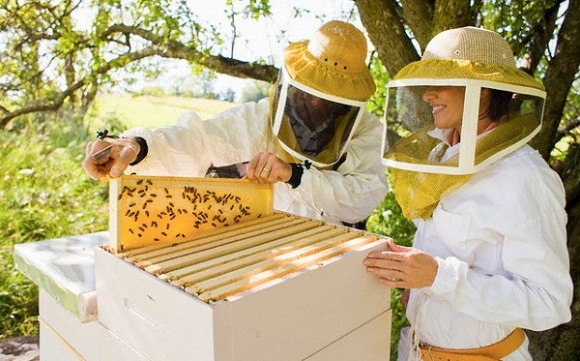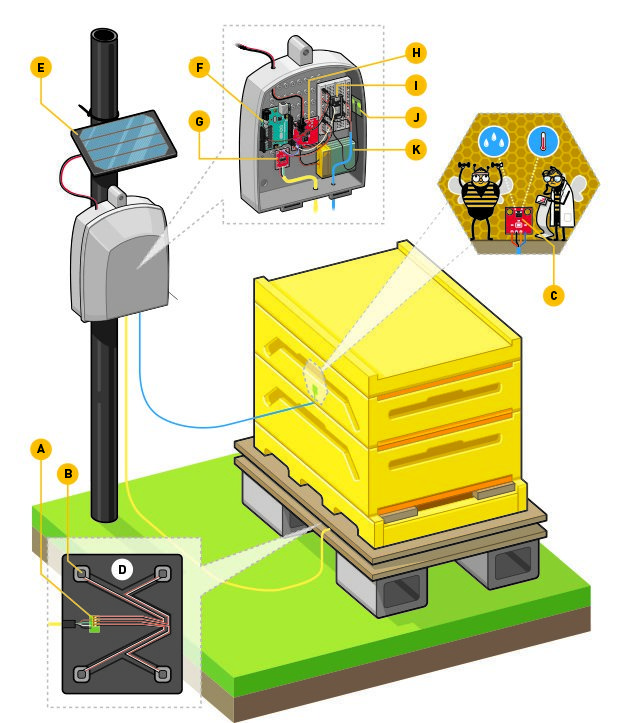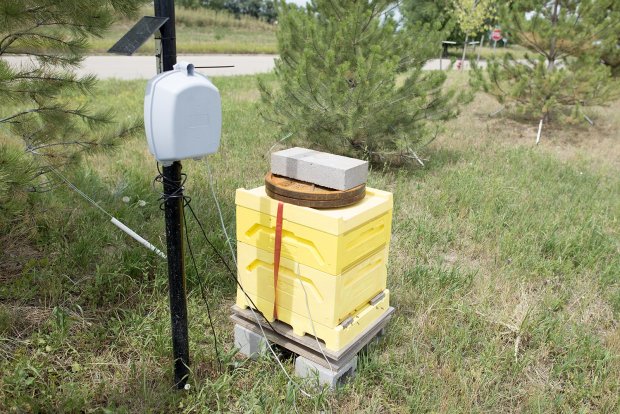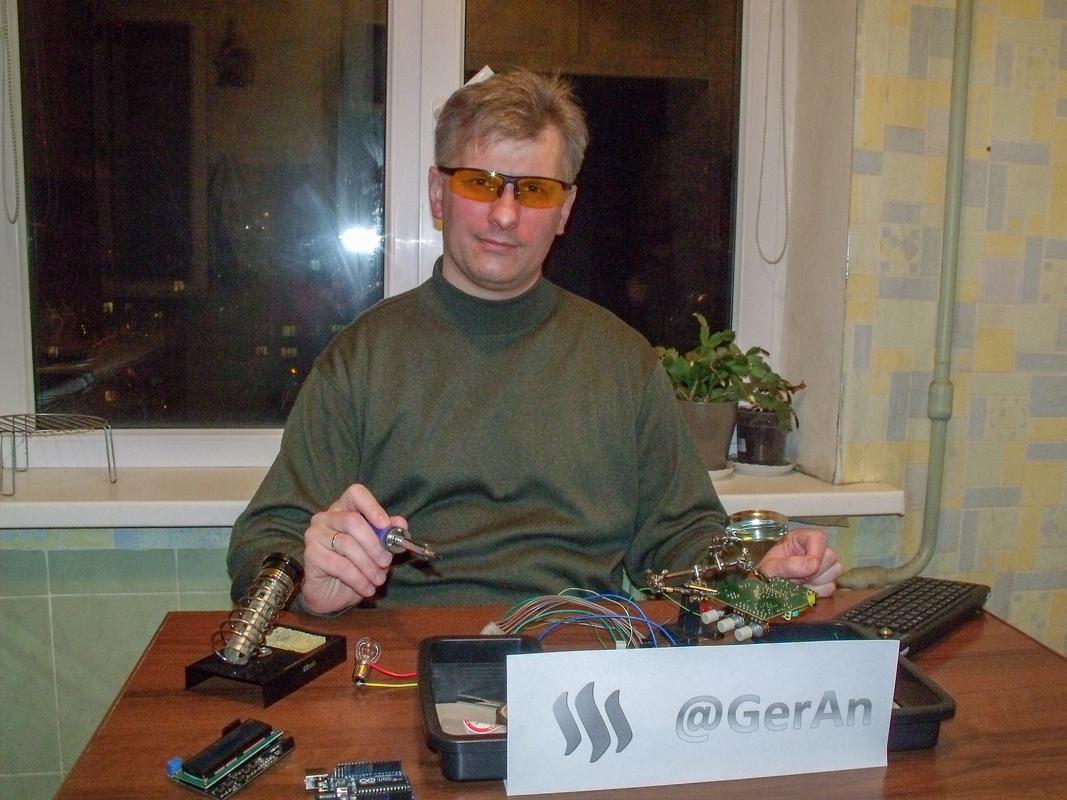Beekeepers against microcontrollers or about the benefits of errors

One of the most conservative types of human activity is beekeeping!
Since the invention of the frame hive and the honey extractor ~ 200 years ago, progress has touched this area only marginally.
This was reflected in the electrification of some processes of pumping (extraction) of honey and the use of winter heating of hives.
Meanwhile, the bee population in the world is greatly reduced - due to climate change, the widespread use of chemistry in agriculture and the fact that we still do not know what the bees want?
My disappeared for the first reason, and this greatly changed the original concept of "smart hive"
In fact, the problem of existing projects in this area is precisely the fact that people creating them are not beekeepers, and the latter, in turn, are far from engineering sciences.
And of course, the question of price - the cost of a bee colony is approximately equal to the cost of a simple hive and the price of honey produced by them for the season (year).
And now take the price of some of the projects taking off and multiply by the number of hives in a commercial apiary (from 100 and above).
In general, who are interested in the Friday thoughts of the geek-beekeeper, I ask under the cat!
My grandfather was an amateur beekeeper - a dozen and a half beehives, so I grew up next to an apiary, although I was afraid of bees in panic.
But after decades I decided to start mine, the bites no longer frightened me, and the desire to have my hive with honey and bees added determination.
So, below is the construction of the most common hive of the Dadan system.
In short, in the main body the bees are constantly hibernating, the “store” is added during the honey collection period, the liner is used for warming and reducing condensate.

And you know, I would not be myself, without trying to invent my bicycle and put Arduin on it ;-)
As a result, he assembled the housing of the Varre hive (multi-frame, frameless - frame 300x200).
I got the bees in the middle of the summer, I didn’t want to move them to a new dwelling, and despite the tricks they didn’t want to occupy the new building.
As a result, in September, he left these attempts, gave the necessary complementary foods, insulated 12-frame Dadan (wall - single-layer pine 40mm - used hive) and left for the winter.
But unfortunately, the alternation of numerous thaws with frosts did not give chances to bees - even experienced colleagues lost about 2/3 of bee colonies.
As you understood, I did not have time to install the sensors, but I made the appropriate conclusions.
It was a saying, so what's up with the smart hive ???
Consider the already existing alien project of the Internet of the bees - what is good and what is not:

The main parameters to control here are the temperature, humidity, and weight of the hive.
The latter is relevant only during the honey collection period. Humidity is also important only in the active period.
In my opinion, there is not enough noise sensor - its intensity together with temperature and humidity can tell about the beginning swarming.
Let us dwell on the temperature:
One sensor is relatively informative only in summer, when the bees actively move the air in the hive space - they do not allow it to overheat and "evaporate" the water from the honey.
In the winter, they are knocked into a "tangle" of about 15 cm in diameter, fall into a half-sleep and migrate in honeycombs, eating honey stored for the winter.
The area of movement in the 12-frame "Dadane" - 40x40x30cm (DR-V), measuring the "average temperature in the hospital" under the ceiling is useless.
The extreme minimum, in my opinion - 4 sensors at a height of 10 cm from the top of the frame - squared 20x20cm.
Humidity - yes, in the podshnikhnik, electric microphone - where bees will not close it with propolis.
Now about the humidity

Eating honey over the winter, bees emit more than 10 liters of moisture!
Do you think it will add health to the foam hive?
Would you like to live in a house of such material?
How about honey with toxins?
Polyfoam at a temperature of about 40 degrees Celsius allocates them oh, as a lot - it is heated to her hive inside in summer.
The walls of the hive must 'breathe' like thermal underwear - optimally - wood - planing outside, inside - no - and not painting in any case!
And finally, as I think to do it:
Remember in the beginning I talked about the price of the issue?
I put it at the forefront, but because while the weight sensor - in the furnace.
Basic set:
The microcontroller - Atmega328P, in sleep mode, power for example - crown via dc-dc (no solar panels!).
"Frame" with the device - MK, power, 4 temperature sensors, humidity sensor, microphone, external connector for connecting modules.
Extensions:
LCD1602 based indicator (maybe one for the whole apiary)
Wi-fi / bluetooth - in general, wireless modules for control from a smartphone.
So, gentlemen, interested in your opinion -
- How interesting will the development of this topic be to the Habr community?
- A good idea for a startup?
- Any constructive criticism is welcome!
With you was IT beekeeper Andrew.

To new meetings on Habré!
UPD Truth is born in disputes, in the discussion on Habr-e - it is corrected!
Determined with iron and methods - the minimum set for one hive (3 parameters - temperature, humidity, noise level) + battery control
battery capacity should be enough in the active season - for a month, during the wintering period - for 5
PS And yes, infa will be given via WiFi
PPS It remains to make a prototype
')
Source: https://habr.com/ru/post/431642/
All Articles